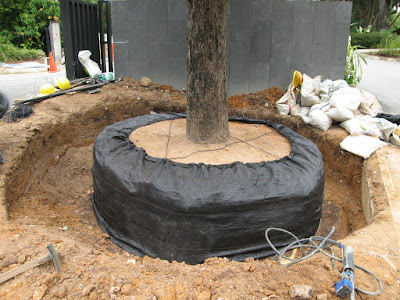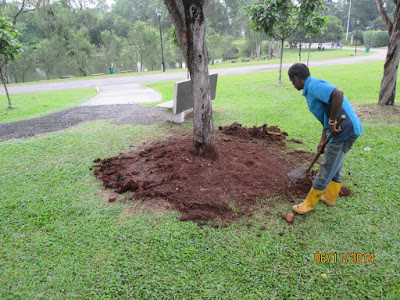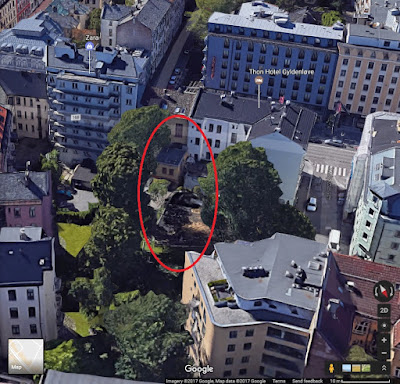Tamarindus indica (Tamarind) somewhere in the middle of Hortpark, which was transplanted from the entrance of Hortpark.
Tamarind Road in Yishun is named after this tree. The fruit is known locally as "assam".
The area immediately around the trunk was sunken, as compared to the outer ring of the compost circle. This is possibly due to the root ball of the tree sinking, as it was transplanted when it was already a large tree.
Fungal fruiting bodies a.k.a. mushrooms observed at the root flare of the tree, presumably exacerbated by the compost that is piled around it.
Before being transplanted to the middle of Hortpark. Compare this root flare with the one above, the buttress roots were more apparent. Photo taken approximately 7 years ago (Feb 2010).
Somehow in the trenching process the rootball was raised, and the root flare was covered. Hence, resulting in the tree being planted at grade or lower than grade, even though it was thought to be planted higher than grade by using the top of the rootball as a guide.
Tamarindus indica (Tamarind) was located at the carpark entrance of Hortpark at Hyderabad Road. This tree was first brought in from Thailand. At the time when it was being transplanted to the middle of Hortpark, it had been there for 2 years (since 2008). Girth was 1.5m (DBH 0.48m or 18.78 inches) and height just under 10m.
The tree after its second transplanting.
Generally, this species has low chances of success when transplanted, which is in stark contrast to the other species in the same family (Leguminosae). It was being transplanted without trenching beforehand, and waiting a few weeks to encourage new fine roots*, and that would further lower transplant success. Trenching more than 10 weeks before moving the tree may reduce the advantage of root pruning, as regenerated roots will quickly grow outside of the rootball.
A rule of thumb was that transplanted trees would take one year to recover for every inch in diameter. Recovery was defined as being able to resume growth in girth, not just putting out new foliage. The tree would need, in "theory" (again, rule of thumb), almost 19 years to recover, based on a DBH of 18.78 inches. Hence, the tree would need 12 more years from today in order to increase in girth. That is, if it manages to overcome a possible basal decay as indicated by the fungal fruiting bodies.
*Fine roots refers to roots (0.05 - 2.0mm dia.) that are colonised by mycorrhizae, and both of them are responsible for the entry of water and nutrients into the plant from the soil.




































